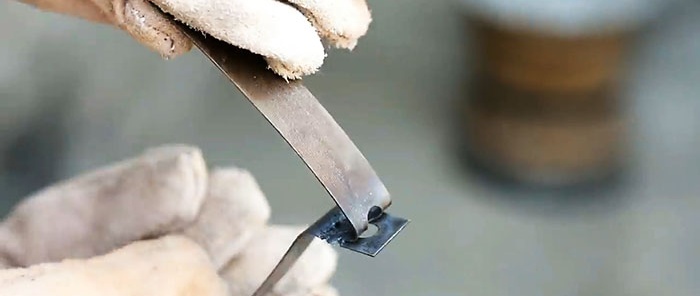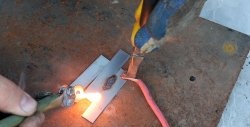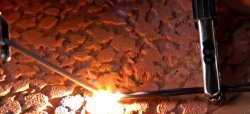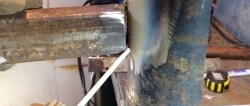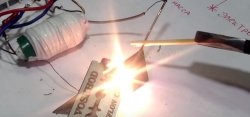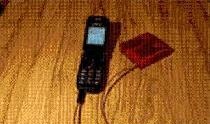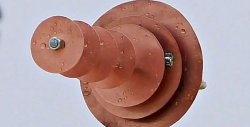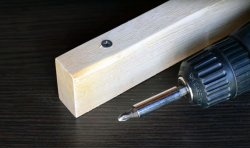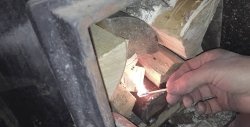Welding thin metal using a battery
When making miniature homemade products, it is sometimes necessary to weld thin-walled parts that a conventional welding machine simply burns through. In this case, you can use a car or motorcycle battery to weld the workpieces. This solution is also suitable for connecting twisted electrical wires in junction boxes.
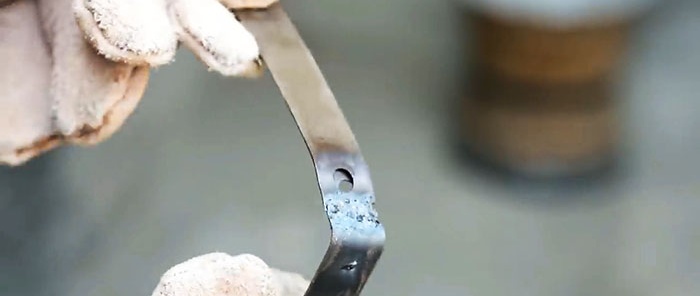
Accessories:
- battery 12V;
- crocodile clips – 3 pcs.;
- powerful copper wires, preferably up to 1 m long – 2 pcs.;
- R20 battery (used will do).
Assembling the welding machine
A graphite rod from an R20 battery will be used as a welding electrode in this homemade product. It is easily removed after cutting its body in a circle.
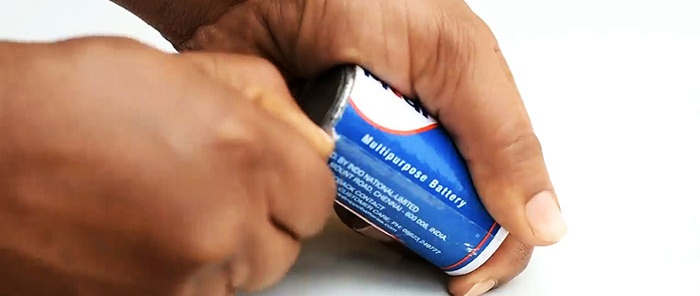

Clamps are attached to the ends of the wires stripped of insulation. There are 2 crocodiles on one cable, and one clip and a graphite rod on the second.

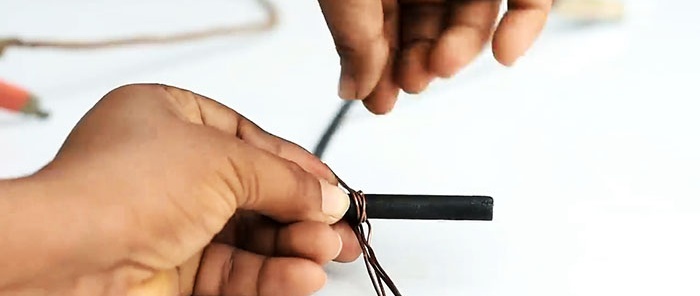
There is no need to use long wires during assembly. The battery power is too small to overcome their resistance. The shorter the cable, the better.
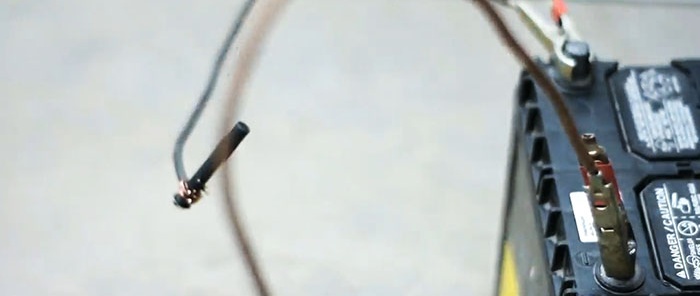
A wire with two clamps is connected to the negative terminal of the battery. The cable crocodile with a rod is placed on the positive terminal.
How to use
Before welding begins, the free crocodile from the negative terminal of the battery is clamped onto one of the workpieces. It will perform the function of mass. The rod will act as an electrode. Its end is briefly touched to the suture site. The electrode gets hot, so it is better to hold it with pliers. The graphite becomes hot and begins to melt the thin metal. To avoid burning the part, the electrode should be moved slowly along the joint line of the workpieces, sometimes interrupting. In the first seconds, the graphite smokes heavily until the remaining electrolyte from the battery burns out.
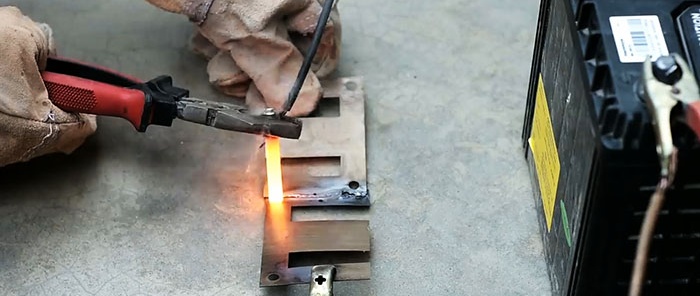
You can weld with a seam or do spot welding. In the latter case, it is worth pre-drilling holes in the upper part to be connected. This device is also suitable for soldering. It can be used to heat a part and then apply solder to it.
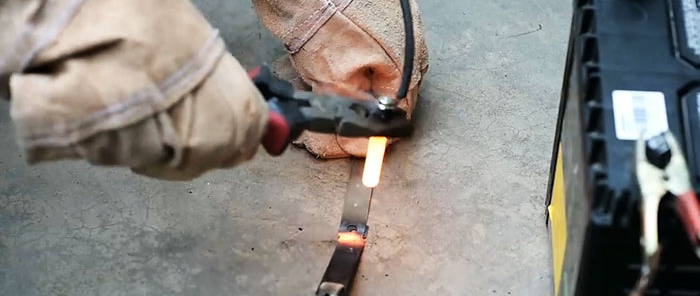

Welding with a battery wears out the battery, so you should not get carried away with this method. It is important to keep the electrode closed for no more than a few seconds at a time. Under the stress of welding, the battery becomes hot and may rupture. The signal for this will be the noise of electrolyte boiling emanating from it. The larger the battery, the larger and thicker the workpieces can be welded. Typically the battery charge is sufficient to operate for several minutes.
